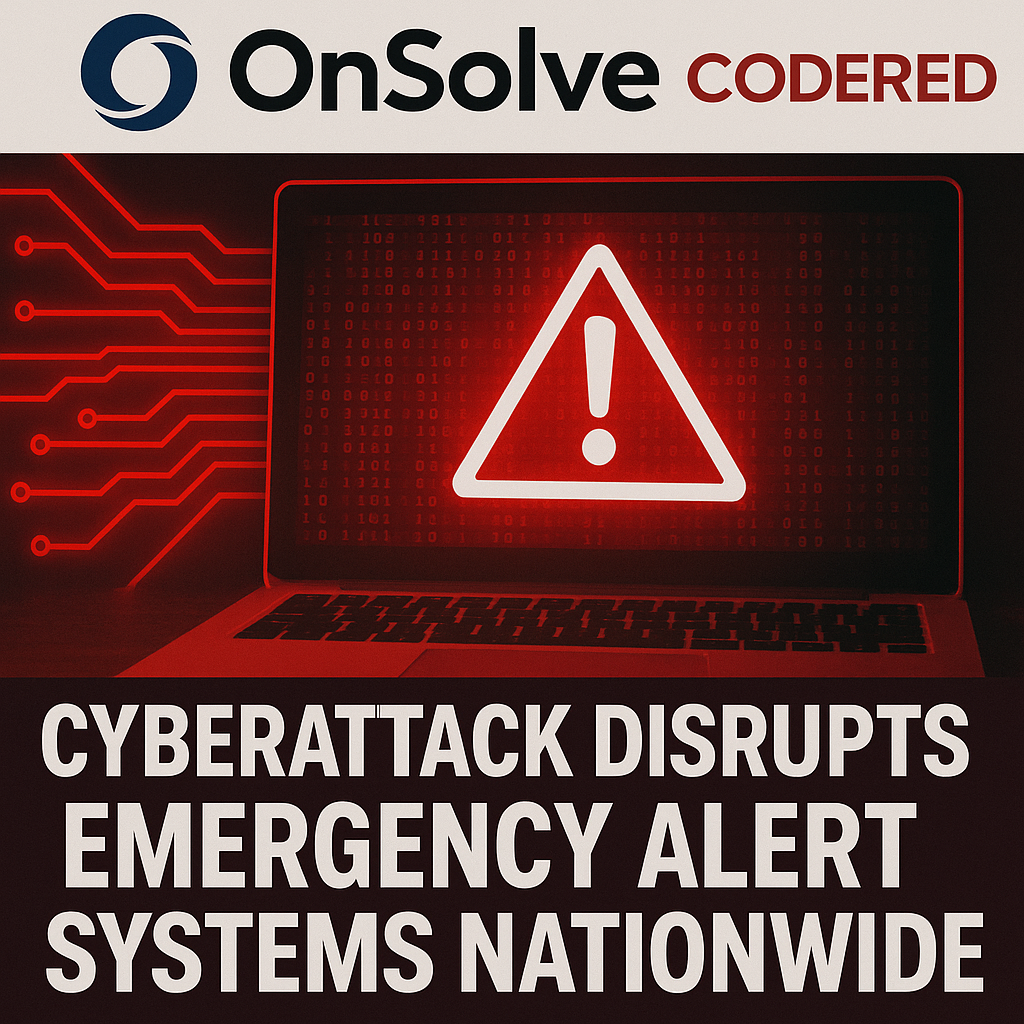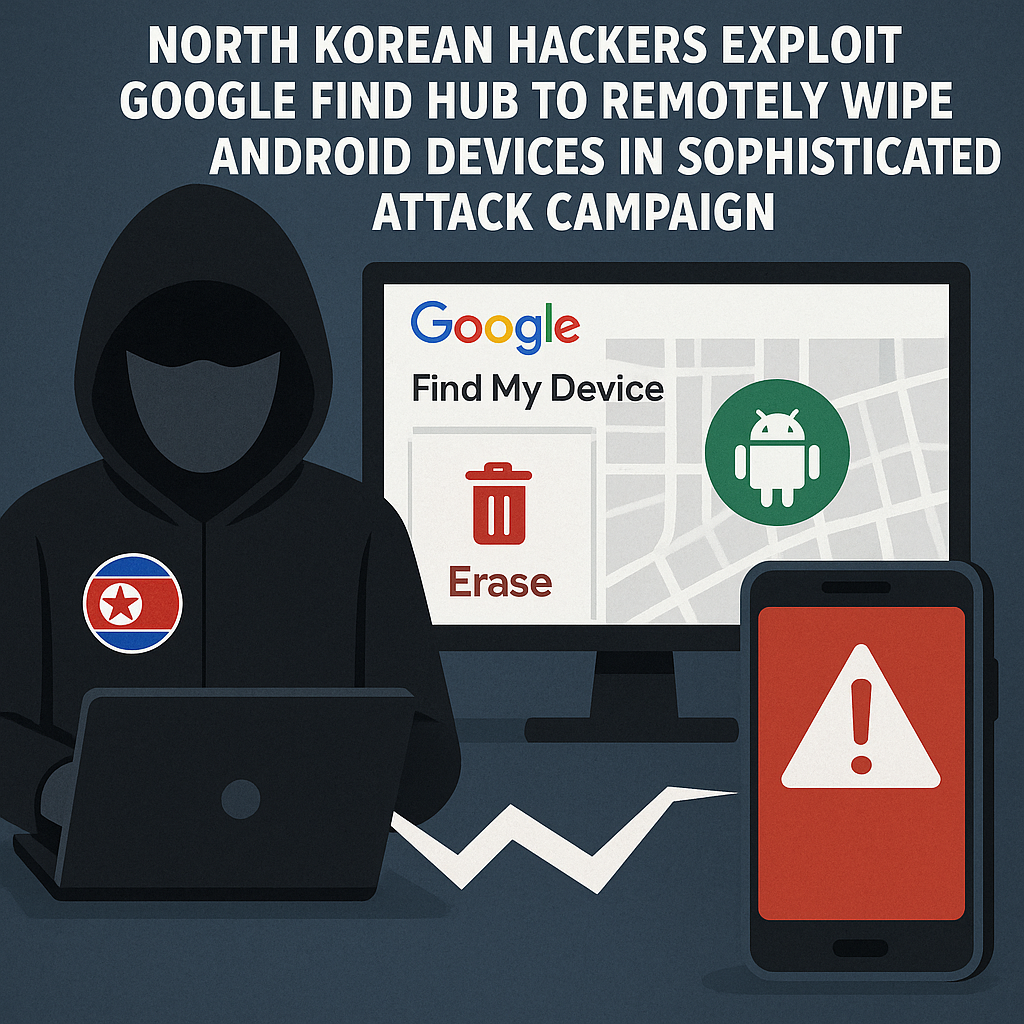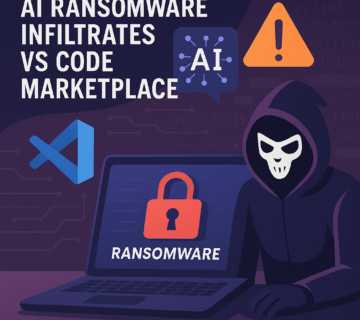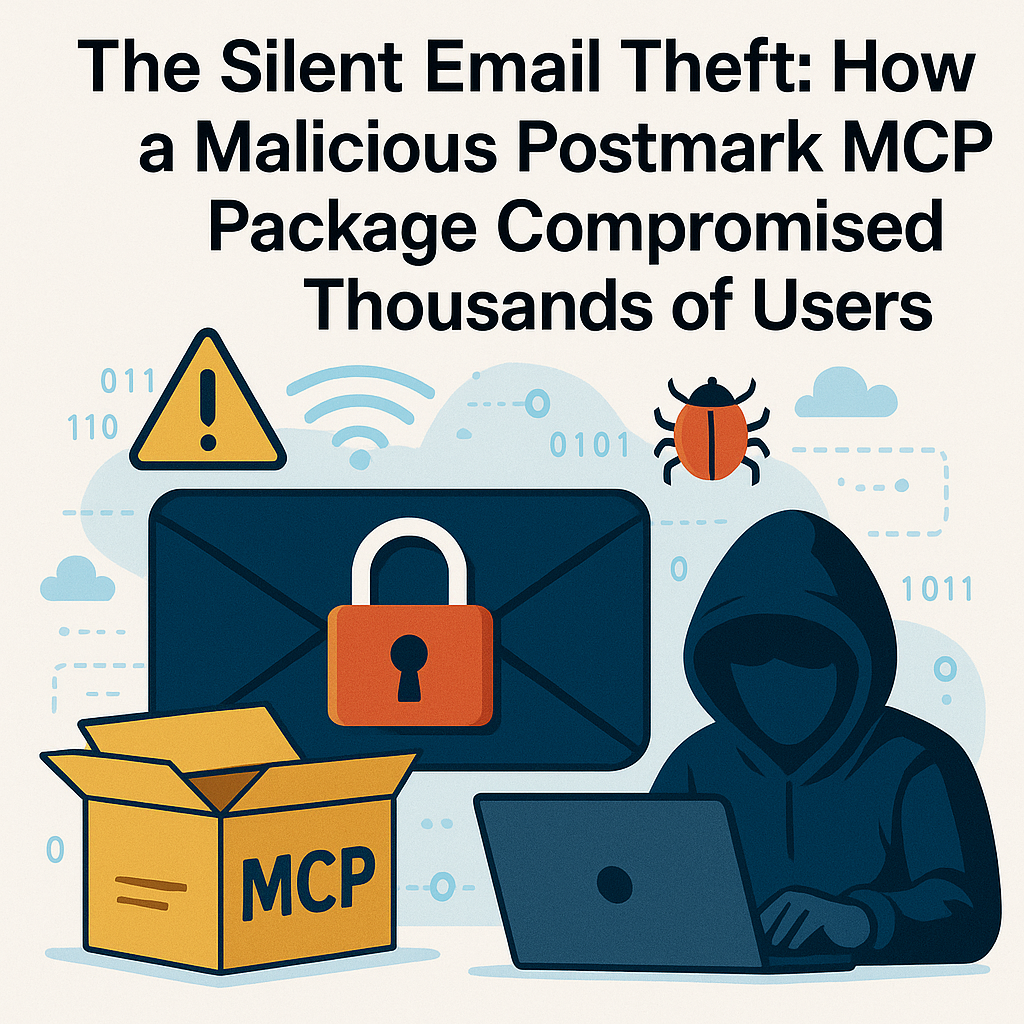Sophisticated NPM Attack: Cross-Platform Infostealer Targets Developer Systems
🎙️ Dive Deeper with Our Podcast!
Sophisticated NPM Supply Chain Infostealer Attack
👉 Listen to the Episode: https://technijian.com/podcast/sophisticated-npm-supply-chain-infostealer-attack/
Subscribe: Youtube | Spotify | Amazon
Software developers worldwide face a growing threat as cybercriminals continue exploiting the open-source ecosystem. Recent discoveries reveal a coordinated campaign involving ten fraudulent packages that infiltrated the npm registry, exposing thousands of developers to sophisticated credential theft operations. This attack demonstrates an alarming evolution in supply chain security threats, combining technical sophistication with psychological manipulation.
The campaign’s scope and duration highlight critical vulnerabilities in the open-source software supply chain. These malicious packages remained active for nearly four months, accumulating approximately 10,000 downloads before security researchers identified the threat. What makes this attack particularly dangerous is its cross-platform capability, targeting Windows, Linux, and macOS systems with equal effectiveness.
The Anatomy of a Supply Chain Attack
Security researchers at Socket uncovered this sophisticated operation after analyzing suspicious behavior patterns in newly uploaded npm packages. The attackers demonstrated remarkable patience and technical expertise, uploading their malicious code on July 4th and maintaining operational security for months. Their success stemmed from leveraging a common vulnerability in human behavior: typographical errors.
The threat actors employed typosquatting, a deceptive technique that capitalizes on developers’ mistakes when typing package names. By creating packages with names nearly identical to popular, legitimate libraries, the attackers increased their chances of accidental installation. This approach requires minimal technical sophistication to execute but can yield significant results when targeting high-traffic packages.
The compromised packages impersonated several widely-used development tools and libraries. Each fake package closely resembled its legitimate counterpart, making detection difficult for developers working quickly or in environments with poor network visibility. The attackers specifically targeted:
- TypeScript (typescriptjs) – the popular typed JavaScript superset used by millions of developers
- Discord.js variations (deezcord.js, dizcordjs, dezcord.js) – libraries for building Discord bot applications
- Ethers.js alternatives (etherdjs, ethesjs, ethetsjs) – Ethereum blockchain interaction libraries
- Nodemon (nodemonjs) – the development tool that automatically restarts Node.js applications
- React Router DOM (react-router-dom.js) – the essential routing library for React applications
- Zustand (zustand.js) – the lightweight state management solution for React
Technical Execution: Layers of Obfuscation
The attackers demonstrated advanced technical capabilities through their implementation of multiple security evasion techniques. Understanding these methods reveals why traditional security tools failed to detect the threat for an extended period. The infection chain begins immediately upon package installation, triggered automatically without requiring any user interaction beyond the initial npm install command.
When developers install one of these compromised packages, npm automatically executes a ‘postinstall’ script embedded in the package configuration. This legitimate npm feature, designed to allow packages to perform necessary setup tasks, becomes a vector for malicious code execution. The script immediately spawns a new terminal window appropriate for the victim’s operating system, executing malicious code outside the visible installation log where developers typically monitor activity.
The Four-Layer Defense System
The malware employs an impressive four-layer obfuscation strategy that effectively bypasses standard static analysis tools. Each layer serves a specific purpose in concealing the malicious payload from security scanners and curious developers who might inspect the package code.
Layer One: Self-Decoding Wrapper – The outermost layer uses JavaScript’s eval function with encoded content, making the actual code impossible to read without execution. This technique prevents simple text-based scanning from identifying malicious patterns.
Layer Two: Dynamic XOR Encryption – The second layer implements XOR encryption with a dynamically generated key unique to each infection. This ensures that even if security researchers decode the first layer, they face an additional challenge in understanding the actual payload.
Layer Three: URL Encoding – The malicious payload undergoes URL encoding, transforming it into a format that appears benign to pattern-matching security tools while remaining fully functional when decoded.
Layer Four: Control-Flow Obfuscation – The final layer scrambles the program’s logical flow, making manual code analysis extremely time-consuming. This technique transforms straightforward code into a complex maze of jumps and indirect references.
Social Engineering Through False Legitimacy
Beyond technical obfuscation, the attackers employed psychological manipulation to reduce suspicion. The malware displays a fake CAPTCHA challenge in the terminal using ASCII art, creating an appearance of legitimate security verification. This clever touch exploits developers’ familiarity with CAPTCHA systems, making the unusual terminal behavior seem like a reasonable security measure rather than a red flag.
While the fake CAPTCHA serves no actual functional purpose, it buys the malware critical seconds to establish its foothold on the system. During this distraction, the malware proceeds with reconnaissance activities, gathering victim information and preparing for the main payload download.
Data Theft Operations: What’s at Stake
Once installed, the infostealer operates with surgical precision, targeting multiple credential storage systems across different operating systems. The malware’s primary objective involves harvesting authentication credentials that could provide attackers with unauthorized access to critical systems, cloud services, financial platforms, and source code repositories.
The initial reconnaissance phase focuses on system fingerprinting and geolocation. The malware collects information about the victim’s operating system, hardware configuration, installed software, and approximate physical location. This data gets transmitted to the attacker’s command and control server, which responds with instructions for downloading the platform-specific payload.
Cross-Platform Credential Harvesting
The downloaded binary, packaged using PyInstaller to appear as a legitimate executable, weighs in at approximately 24 megabytes. This substantial size reflects the comprehensive nature of the stealing operations, which target multiple credential storage mechanisms across all major operating systems.
On Windows systems, the malware targets the Windows Credential Manager, the built-in password vault that stores credentials for network resources, remote desktop connections, and web authentication. This system-level access provides attackers with usernames and passwords for corporate networks, VPN connections, and cloud services.
macOS users face equally severe risks as the malware extracts data from the macOS Keychain, Apple’s integrated password management system. The Keychain stores not only website passwords but also encryption keys, secure notes, certificates, and credentials for email accounts and network services.
Linux systems receive targeted attention through support for multiple password storage backends. The malware queries SecretService, the standard Linux credential storage API, along with libsecret and KWallet, ensuring compatibility across different Linux distributions and desktop environments. This comprehensive approach maximizes the attacker’s yield regardless of the victim’s specific Linux configuration.
Browser-Based Intelligence Gathering
Web browsers represent another lucrative target for credential theft. The malware systematically examines Chromium-based browsers including Google Chrome, Microsoft Edge, Brave, and Opera, along with Mozilla Firefox and its derivatives. The stolen data includes far more than simple login credentials.
Browser profiles contain saved passwords for countless websites and services, but they also harbor session cookies that provide immediate access to authenticated accounts without requiring password entry. These cookies enable attackers to bypass two-factor authentication in many cases, as the session remains valid from the perspective of the target website.
The malware also collects autofill data, browsing history, and stored payment information. This comprehensive approach ensures attackers gain maximum intelligence about their victims’ online activities, relationships, and financial resources.
Developer-Specific Targets
Recognizing that its victims work in software development, the malware specifically hunts for SSH keys stored in common directories like .ssh folders in user home directories. These cryptographic keys provide password-free access to remote servers, source code repositories, and cloud infrastructure. Compromised SSH keys can grant attackers persistent, difficult-to-detect access to critical systems.
The malware demonstrates sophisticated understanding of modern development practices by targeting authentication tokens. OAuth tokens, JSON Web Tokens (JWT), and various API keys receive special attention. These tokens often provide broad access to cloud services, content delivery networks, database systems, and third-party APIs without requiring additional authentication.
A compromised API key might grant attackers access to cloud computing resources, allowing them to run cryptocurrency mining operations, launch additional attacks, or steal sensitive data. OAuth tokens could provide access to email accounts, social media profiles, or corporate collaboration platforms, enabling further social engineering or data exfiltration.
Data Exfiltration Process
After collecting credentials and sensitive data, the malware packages everything into compressed archives. The compression serves dual purposes: reducing transfer time and potentially evading network monitoring systems that might flag large uncompressed data transfers.
The malware temporarily stages these archives in system directories typically used for temporary files, specifically targeting /var/tmp or /usr/tmp on Unix-like systems. These locations often escape security monitoring while providing the necessary permissions for file operations. Finally, the collected data gets transmitted to the attacker’s server, identified by researchers as operating at IP address 195.133.79.43.
Impact and Response Recommendations
The discovery of these malicious packages raises significant concerns about the security of the open-source software ecosystem. With nearly 10,000 downloads over the campaign’s duration, potentially thousands of developers and organizations face credential compromise. The actual impact likely extends far beyond individual developers, affecting the corporate networks, cloud services, and customer data they access.
Organizations should assume that any system that installed these packages has been fully compromised. The comprehensive nature of the data theft means attackers potentially gained access to a complete profile of the victim’s digital life, professional and personal. This information could support various attack vectors, from targeted phishing to unauthorized system access.
Immediate Remediation Steps
Developers who installed any of the compromised packages must take immediate action to contain the breach. The first priority involves identifying all affected systems through audit logs, package manager history, or repository searches. Simply uninstalling the malicious package provides insufficient protection, as the downloaded binary may persist on the system and continue exfiltrating data.
Complete system remediation requires several steps. First, conduct a thorough search for the 24-megabyte PyInstaller executable that serves as the main payload. Check temporary directories, downloads folders, and any locations identified in system logs. Kill all suspicious processes and remove any associated files.
Security teams must perform a comprehensive credential rotation across all systems potentially accessible from the compromised machine. This rotation should prioritize high-value targets: cloud service accounts, SSH keys, API tokens, database credentials, and access to production environments. Organizations cannot assume any credential stored on or accessible from the infected system remains secure.
Review recent authentication logs for unusual access patterns that might indicate unauthorized use of stolen credentials. Pay particular attention to logins from unexpected geographic locations, unusual access times, or attempts to access resources the user doesn’t normally interact with. Enable additional monitoring on accounts accessible from compromised systems.
Long-Term Security Improvements
This incident highlights the need for stronger security practices throughout the software development lifecycle. Organizations should implement comprehensive dependency management policies that go beyond simple vulnerability scanning. Regular audits of project dependencies help identify suspicious packages before they cause damage.
Developers need training on recognizing supply chain attacks and verifying package authenticity. Simple practices like double-checking package names before installation, verifying publisher information, and reviewing recent package updates can prevent many typosquatting attacks. Organizations should consider implementing approval processes for new dependencies, particularly for critical projects.
Network security teams should monitor outbound connections from development systems, watching for data exfiltration patterns or connections to known malicious infrastructure. Implementing egress filtering helps prevent compromised systems from contacting attacker-controlled servers, potentially limiting the damage from successful intrusions.
Frequently Asked Questions
How can I verify if I installed one of these malicious packages?
Check your project’s package.json file and package-lock.json (or yarn.lock) for any of the suspicious package names listed in this article. You can also run ‘npm list’ in your project directory to see all installed packages and their versions. Search your command history for recent npm install commands to identify when and where you might have installed suspicious packages. Additionally, review your system’s temp directories (/var/tmp, /usr/tmp on Linux/Mac, or %TEMP% on Windows) for unfamiliar PyInstaller executables around 24MB in size.
What should I do if I discover I installed a malicious package?
Immediately disconnect the affected system from your network to prevent further data exfiltration. Uninstall the malicious package and search for the 24MB PyInstaller executable, removing any instances you find. Rotate all credentials that were accessible from that system, including passwords, SSH keys, API tokens, and OAuth credentials. Inform your security team or IT department about the potential breach. Monitor authentication logs for unusual access patterns that might indicate unauthorized use of stolen credentials. Consider reimaging the affected system if it contained particularly sensitive information or access to critical infrastructure.
Why did standard security tools fail to detect these packages?
The attackers used four layers of code obfuscation that effectively disguised the malicious payload from static analysis tools. Traditional security scanners look for known malicious patterns or suspicious code structures, but the heavy obfuscation transformed the code into something that appeared benign. The dynamic XOR encryption with runtime-generated keys meant each instance of the malware looked different, preventing signature-based detection. The fake CAPTCHA display added legitimacy to unusual behavior. Many security tools focus on runtime behavior, but the malware executed its malicious activities quickly during installation, potentially before monitoring tools could flag the behavior as suspicious.
Are these packages still available on npm?
At the time of the security research publication, the packages remained available on the npm registry despite being reported. The npm security team may have since removed them, but this delay highlights challenges in rapidly responding to supply chain security threats. Even after removal, previously installed packages remain on affected systems until manually removed. Organizations should not rely solely on package registry security measures and must implement their own verification and monitoring systems. The persistence of these packages demonstrates the importance of proactive security measures rather than reactive approaches.
How can developers protect against typosquatting attacks?
Always carefully verify package names before installation, paying close attention to spelling and punctuation. Use copy-paste from official documentation rather than typing package names manually. Check the package publisher information and download statistics before installing new dependencies. Review the package’s repository link to ensure it points to the official project. Look for packages with established publishing history and reputable maintainers. Consider using tools that warn about suspicious package names or low download counts for critical projects. Implement code review processes that include dependency changes. Use lockfiles to ensure consistent package versions across your team and prevent unexpected updates.
What makes this attack particularly dangerous compared to other npm security incidents?
This attack combines several dangerous elements that make it exceptionally threatening. The cross-platform capability means no operating system provides inherent protection. The multi-layer obfuscation successfully evaded detection for four months, suggesting sophisticated threat actors with significant resources. The targeting of developer-specific credentials like SSH keys and API tokens could enable further attacks on corporate infrastructure and customer data. The comprehensive nature of the data theft, including browser cookies and system keychains, provides attackers with extensive access to victim accounts and services. The use of legitimate npm features for malicious purposes demonstrates how trusted platform mechanisms can be weaponized against users.
What are the potential consequences of having my credentials stolen in this attack?
The consequences can be severe and far-reaching. Attackers could gain unauthorized access to your organization’s cloud infrastructure, potentially leading to data breaches, service disruptions, or unauthorized resource usage for cryptocurrency mining. Compromised source code repositories might allow attackers to inject malicious code into your products, affecting your customers. Stolen session cookies could enable account takeovers on various services without requiring passwords. API tokens might grant access to third-party services, customer data, or payment processing systems. SSH keys could provide persistent backdoor access to servers and development environments. Financial credentials could lead to fraudulent transactions. The stolen data might also support targeted phishing campaigns against you or your colleagues, using detailed knowledge of your work environment and relationships.
Should organizations implement stricter controls on npm package installation?
Organizations should consider implementing multi-layered security controls for dependency management. This might include using private npm registries that mirror approved packages, requiring security team approval for new dependencies in critical projects, implementing automated scanning tools that check package authenticity and security, maintaining an inventory of approved packages with known-good versions, and establishing policies around dependency updates. However, overly restrictive policies can hinder developer productivity and innovation. The key lies in finding a balance between security and operational efficiency, possibly varying controls based on project criticality. Developer education about supply chain security often provides better protection than purely technical controls, as informed developers make better security decisions.
How Technijian Can Help
Supply chain security incidents like these malicious npm packages represent just one facet of the complex cybersecurity landscape facing modern organizations. At Technijian, we understand that protecting your development environment requires more than just installing antivirus software or hoping your developers catch suspicious packages before installation.
Our comprehensive security services help organizations build resilient defenses against supply chain attacks and other sophisticated threats. We begin by conducting thorough assessments of your current dependency management practices, identifying vulnerabilities in how your development teams source, validate, and maintain external code libraries. This assessment covers not just npm packages but your entire software supply chain, including container images, system packages, and third-party components.
We help you implement robust security controls that protect developer workstations without hindering productivity. Our solutions include configuring network monitoring to detect suspicious outbound connections, establishing private package registries with vetted dependencies, and deploying security tools that analyze package behavior in real-time. We can help you create approval workflows for new dependencies in critical projects, ensuring security review without creating bottlenecks in your development process.
When security incidents occur, rapid response becomes crucial. Technijian provides incident response services specifically tailored to software development environments. We help identify compromised systems, contain the breach, assess the scope of credential exposure, and guide your team through comprehensive remediation. Our forensic analysis capabilities can determine exactly what data was accessed or stolen, informing your notification obligations and risk mitigation strategies.
Beyond reactive measures, we emphasize proactive security through developer training and awareness programs. Our security workshops teach developers to recognize supply chain attacks, verify package authenticity, and follow secure coding practices. We help establish security champions within development teams who can serve as first-line defenders against threats like typosquatting attacks.
Technijian’s managed security services provide ongoing protection and monitoring for your development infrastructure. Our security operations center monitors for indicators of compromise, analyzes threat intelligence relevant to your technology stack, and maintains your security tools and configurations as threats evolve. We stay current on emerging attack techniques and adjust your defenses accordingly, ensuring you remain protected against the latest threats.
We also assist with compliance requirements related to secure software development, including SSDF (Secure Software Development Framework), NIST guidelines, and industry-specific regulations. Our documentation and audit support services help demonstrate your security practices to customers, partners, and regulators.
For organizations that have experienced credential compromise, we provide comprehensive recovery services. This includes systematic credential rotation across your entire environment, reviewing authentication logs for unauthorized access, implementing enhanced monitoring on potentially compromised accounts, and strengthening authentication mechanisms to prevent future incidents.
Don’t wait for a security incident to expose vulnerabilities in your software supply chain. Contact Technijian today to schedule a security assessment and learn how we can help protect your development environment from supply chain attacks, credential theft, and other sophisticated threats. Our team of experienced security professionals stands ready to help you build a more secure, resilient development infrastructure that protects both your organization and your customers.
About Technijian
Technijian is a premier Managed IT Services provider AI-powered workflow automation solutions, specializing in connecting enterprise communication and support platforms. With deep expertise in Microsoft Teams, 3CX, and major helpdesk systems, Technijian helps businesses transform fragmented tech stacks into cohesive, intelligent ecosystems that drive efficiency, improve customer satisfaction, and support scalable growth.
Specializing in delivering secure, scalable, and innovative AI and technology solutions across Orange County and Southern California. Founded in 2000 by Ravi Jain, what started as a one-man IT shop has evolved into a trusted technology partner with teams of engineers, AI specialists, and cybersecurity professionals both in the U.S. and internationally.
Headquartered in Irvine, we provide comprehensive cybersecurity solutions, IT support, AI implementation services, and cloud services throughout Orange County—from Aliso Viejo, Anaheim, Costa Mesa, and Fountain Valley to Newport Beach, Santa Ana, Tustin, and beyond. Our extensive experience with enterprise security deployments, combined with our deep understanding of local business needs, makes us the ideal partner for organizations seeking to implement security solutions that provide real protection.
We work closely with clients across diverse industries including healthcare, finance, law, retail, and professional services to design security strategies that reduce risk, enhance productivity, and maintain the highest protection standards. Our Irvine-based office remains our primary hub, delivering the personalized service and responsive support that businesses across Orange County have relied on for over two decades.
With expertise spanning cybersecurity, managed IT services, AI implementation, consulting, and cloud solutions, Technijian has become the go-to partner for small to medium businesses seeking reliable technology infrastructure and comprehensive security capabilities. Whether you need Cisco Umbrella deployment in Irvine, DNS security implementation in Santa Ana, or phishing prevention consulting in Anaheim, we deliver technology solutions that align with your business goals and security requirements.
Partner with Technijian and experience the difference of a local IT company that combines global security expertise with community-driven service. Our mission is to help businesses across Irvine, Orange County, and Southern California harness the power of advanced cybersecurity to stay protected, efficient, and competitive in today’s threat-filled digital world.





